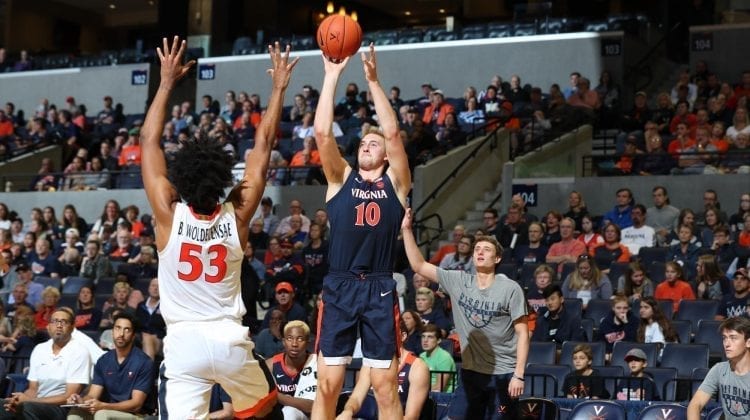
It’s conference preview time!
Over the next few months, we’ll break down one league every week, featuring key questions, preseason power rankings, preseason awards, and more.
This week’s focus is on the ACC.
Check below for a comprehensive breakdown of the conference:
Five Questions entering the ACC
1. Has the ACC’s pecking order officially changed?
Yes, and that’s because of Florida State. For years, there was an expectation that Duke, North Carolina, Virginia, and Louisville would automatically be slotted to finish at the top of this league, but the Seminoles’ success over the past few years have changed that perception. In addition to winning the ACC regular season title last year, Florida State is a combined 29-9 in conference games over the last two seasons; Duke is 29-9 as well. The Seminoles also reached the Elite Eight in the 2018 NCAA Tournament and earned a three seed in the field of 68 in 2017. Leonard Hamilton has now created an expectation of elite results and that’s not going to change during the upcoming season. Florida State has proved that it belongs in the upper echelon of this conference.
2. How big of an impact will Sam Hauser have for Virginia?
A major one. Last season, Virginia’s average field-goal percentage (41.3), three-point field-goal percentage (30.4), and points (57) were all the lowest they’ve been since Tony Bennett arrived in Charlottesville in 2009. Those numbers should all increase dramatically with Hauser in the lineup, who sat out last year after transferring from Marquette. The 6-8 forward shot better than 40 percent from three-point range during each of the first three years of his college career and made 63 shots or more from long distance during that span. Hauser averaged 14.9 points and 7.2 rebounds two years ago from the Golden Eagles and that was when he was operating as a secondary option behind Markus Howard. Now set to be a focal point, Hauser is a legitimate candidate to be ACC Player of the Year and an All-American. If Virginia won 15 ACC games last season with those types of offensive averages, it’s got an excellent chance to be a Final Four caliber team with Hauser joining a returning nucleus of Kihei Clark, Casey Morsell, Jay Huff, and Tomas Woldetensae.
3. Can North Carolina bounce back?
Yes. Does that mean that the Tar Heels will also be one of the best teams in the country next season? No. Roy Williams went through the toughest year that he’s had as a head coach last season as North Carolina finished 14-19 overall and tied for 13th in the ACC. The Hall-of-Famer went to work and added a quality recruiting class, which should make the Tar Heels better, but the question is how much better? The addition of first-year big men Day’Ron Sharpe and Walker Kessler should combine with Armando Bacot and Garrison Brooks to give North Carolina one of the more physically imposing front courts in the country. Shooting and decision making remain a question. Williams has two freshmen — Caleb Love and R.J. Davis — set to split point guard responsibilities following Cole Anthony’s departure while a pair of four-star prospects — Puff Johnson and Kerwin Walton — will add insurance on the wings. Williams is also expecting shooting guard Anthony Harris to be ready for the start of the season after only appearing in five games as a freshman due to a knee injury. What will all those pieces equate to? Probably a team that is good enough to make the NCAA Tournament, but anything beyond that isn’t fair to project just yet. Remember, college basketball is still a guard’s game and North Carolina will rely on two first-year players to run its offense a year after the Tar Heels had a combined 472 assists to 426 turnovers as a team and shot 30.4 percent from three-point range. It may take this team some time to mesh, but the results should undoubtedly be better than they were a year ago.
4. Which ACC team is set to re-emerge nationally?
Miami. Can a team win 15 games one year and be a top tier team in the ACC the next? It seems within the realm of possibility in Coral Gables. Jim Larranaga has taken the Hurricanes to the Sweet 16 twice during his time with the Hurricanes and both of those teams were built on veteran guards and upperclassmen. This team has a similar feel. Larranaga’s starting backcourt of Chris Lykes and Kameron McGusty have a combined nine years of college experience and fifth-year senior Nysier Brooks should seamlessly anchor the pivot after transferring from Cincinnati. Miami will also have two fifth-year seniors up front in big man Rodney Miller and skilled forward Sam Waardenburg. This type of collective seasoning should take pressure off top-50 freshman Earl Timberlake and sophomores Isaiah Wong and Harlond Beverly from having to undertake too much responsibility. Finishing in the ACC’s top third is a tall task, but Larranaga has done it multiple times before. It says here that the Hurricanes are more than capable of flirting with the same type of finish this season.
5. Who is the sleeper?
Clemson. The Tigers return four of their top five scorers from last season’s team that went 16-15 overall and 9-11 in the ACC, headlined by all-conference forward Aamir Simms. Three key perimeter players — Al-Amir Dawes, Clyde Trapp, and John Newman — are back with Fordham transfer Nick Honor (15.3 points in 18-19) also set to inherit minutes in the back court. Brad Brownell has also recruited effectively, headlined by a troika of four-star front court prospects — P.J. Hall, Olivier- Maxence Prosper, and Lynn Kidd — to go with Simms and veteran Hunter Tyson on the baseline. Beyond its flagship programs, the ACC may have teams with more sizzle than Clemson, but that doesn’t necessarily mean that those teams will have more substance. Brownell has quietly put together seven consecutive winning seasons; this will be his best team since the Tigers reached the Sweet 16 in 2018.
ACC Preseason Power Rankings
1. Virginia
2. Duke
3. Florida State
4. North Carolina
5. Miami
6. Louisville
7. Syracuse
8. Georgia Tech
9. Clemson
10. NC State
11. Notre Dame
12. Pitt
13. Boston College
14. Virginia Tech
15. Wake Forest
ACC Preseason First-Team
David Johnson, Louisville
Michael Devoe, Georgia Tech
Scottie Barnes, Florida State
Sam Hauser, Virginia
Garrison Brooks, North Carolina
ACC Preseason Player of the Year
Sam Hauser, Virginia
15 Impact Freshmen
*In no particular order
Jabri Abdur-Rahim, Virginia
Jalen Johnson, Duke
Mark Williams, Duke
Jeremy Roach, Duke
D.J. Steward, Duke
Jaemyn Brakefield, Duke
Scottie Barnes, Florida State
Caleb Love, North Carolina
R.J. Davis, North Carolina
Day’Ron Sharpe, North Carolina
Walker Kessler, North Carolina
Earl Timberlake, Miami
P.J. Hall, Clemson
Joe Bamisile, Virginia Tech
Dermarr Langford, Boston College
15 Under-The-Radar Freshmen
*In no particular order
Reece Beekman, Virginia
Henry Coleman, Duke
Puff Johnson, North Carolina
Kerwin Walton, North Carolina
Matt Cross, Miami
Jaelyn Withers, Louisville (redshirt)
D’Andre Davis, Louisville
JJ Traynor, Louisville
Olivier Maxence-Prosper, Clemson
Cam Hayes, NC State
Kadary Richmond, Syracuse
John Bol Ajak, Syracuse (redshirt)
John Hugley IV, Pitt
William Jeffress, Pitt
Darius Maddox, Virginia Tech
15 Impact Transfers
*In no particular order
*This does not include transfers who have pending waivers with the NCAA
Sam Hauser, Virginia (Marquette)
Patrick Tape, Duke (Columbia)
Sardaar Calhoun, Florida State (JUCO)
Nysier Brooks, Miami (Cincinnati)
Carlik Jones, Louisville (Radford)
Charles Minlend Jr., Louisville (San Francisco)
Nick Honor, Clemson (Fordham)
Thomas Allen, NC State (Nebraska)
Cormac Ryan, Notre Dame (Stanford)
Ithiel Horton, Pitt (Delaware)
Makai Ashton-Langford, Boston College (Providence)
Cartier Diarra, Virginia Tech (Kansas State)
Keve Aluma, Virginia Tech (Wofford)
Alan Griffin, Syracuse (Illinois)
Kyle Sturdivant, Georgia Tech (USC)
10 Breakout Players
*In no particular order
Jay Huff, Virginia
Matthew Hurt, Duke
Anthony Polite, Florida State
Isaiah Wong, Miami
David Johnson, Louisville
Samuell Williamson, Louisville
Manny Bates, NC State
Quincy Guerrier, Syracuse
Nate Laszewski, Notre Dame
Isaiah Mucius, Wake Forest

